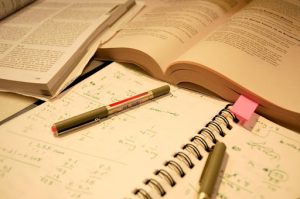The methods of studying are endless, from flashcards to reviews. The new semester has begun, and students are introduced to various new subjects. Now, Wheeler students must learn how to work in a new environment.
Even though there are many different ways to study, the physiologists at the American Psychological Association have collected a list of the best ways to prepare. Simple tweaks such as spacing out study sessions, interweaving subjects, and testing yourself are significant, long-term ways to enhance your study habits, affecting how you do on assessments overall. (Apa.org)

Although testing seems like a boring, stressful way to study for the real thing, it has been proven to be one of the most effective. “Testing can be a useful tool to help students learn, researchers say. Decades of research have shown that making yourself recall information helps strengthen your long-term learning, says Henry Roediger, Ph.D., a psychologist at Washington University in St. Louis who has done some of the key research in the area. In other words, students might not enjoy taking a quiz at the end of every class or testing themselves every time they finish reading a chapter. However, doing so would probably help them remember the material on the final exam, even after the class ended” (Apa.org).
By spacing out your study sessions, you improve your long-term memory. Put another way, if you have 12 hours to study a subject, it is better to study it for three hours each week for four weeks rather than to squeeze everything into the last week. There needs to be a clear explanation for why spacing study sessions are so practical. Still, one possible explanation is that people must remember what they learned in their initial study session after some time. When they revisit the material later, the new study session triggers their memory, and they remember what they learned previously. As you forget and retrieve knowledge, it helps cement the latest knowledge in your brain.
Some may think the best way to learn something well might be to sit down and focus on it for as long as possible. However, research shows that it is better to mix tasks and topics. The study conducted by Kornell and psychologist Robert Bjork, PhD, of UC Los Angeles 2008, tested 120 participants’ painting styles by looking at six examples of each artist’s work. For half of the artists, all six paintings were displayed in succession. The other half saw the paintings in a mixed-up order. The participants then did a distracting task (counting backward by threes from 547) before identifying which artist had painted a new painting. Those who studied paintings in an “interwoven” style were significantly better at identifying the artists than those who studied the paintings in blocks. (Apa.org)
Miss. Lewis (history) compares this semester to last, specifically in the coursework.
“This semester, I’ve tried to make things more intentional. So, I am making assignments that will further appeal to my students’ learning styles. I’ve been trying to make them in charge of their learning, becoming experts on a particular topic and teaching their classmates.”
She recommends study tips to students: “Just review your notes as you go. Something as simple as looking at your notes every night, literally just scanning through, helps just revisiting your notes, and I think that’s probably the biggest study tip.”

However, students have different ideas on how to study effectively. Mary Holifeild (10) recommends flashcards. Ben Phan (9) plans to study this semester by doing practice sheets and reviewing notes and slideshows. When it comes to the study methods of other students, he recommends “doing the practice. Most of the time, that is the most efficient way to study. Even if you didn’t understand the lesson, do the practice.”
The new semester at Wheeler High School has started, and many subjects come with that. As students learn their new environments, they must adapt to their situations, and to pass their classes, they must study.


